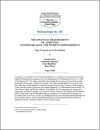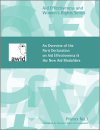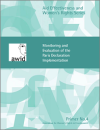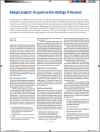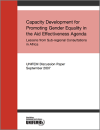أسس 49
The paper provides a comprehensive overview and guide to complex issue of linkages between aid and gender equality.
The EC/UN Partnership has reviewed the extent to which commitments to women's security and peacebuilding needs have been financed by Official Development Assistance (ODA) in four different post-conflict situations: the Democratic Republic of Congo, Nepal, Bougainville (Papua New Guinea), and Aceh (I
The report prepared by the OECD DAC provides statistics on aid focused on gender equality and women's empowerment extended by DAC members.
This first primer of the AWID Aid Effectiveness and Women's Rights Series published in 2008 provides an overview of the Paris Declaration on Aid Effectiveness and the subsequent new aid modalities that have emerged from donor discussions to foster a more effective and efficient use of
This third primer in the AWID Aid Effectiveness and Women's Rights series focuses on describing how the parallel tracking process is being undertaken independently by CSOs and, most recently, some women's rights organizations.
The monitoring and evaluation process of implementation of the Paris Declaration has been broadly debated among civil society organizations involved in the aid effectiveness process.
This article by Rebecca Carter, Stephen Lister looks at the relevance of budget support to financing the relevant MDGs, and draws some conclusions about the role of budget support, how it should be designed and the attitude civil society organizations should adopt towards it.
This call for Action was issued following the meeting on “Gender and Development: Towards Effective, Inclusive Development” Organized by the Ministry of Foreign Affairs and Trade, Republic of Korea and co-hosted by UN Women, in July 2011.
This discussion paper was prepared following UNIFEM's sub-regional Consultations on gender equality and aid effectiveness held in various countries in Africa in 2006-2007 (Burundi in July 2006, Djibouti in November 2006, Ghana in November 2006 and Zambia in July 2007).
Recent reforms of aid delivery, most notably the Paris Declaration on Aid Effectiveness (2005), have provided new opportunities and mechanisms to translate donor and government commitments into improved practice results and impacts.
